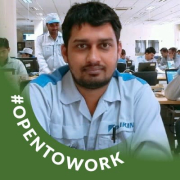

Red Hat Hyperconverged Infrastructure and Dell vSAN Ready Nodes compete fiercely in the hyperconverged infrastructure market. Red Hat HCI has an edge with its cost-effectiveness and customer support, while Dell vSAN Ready Nodes attract users who prioritize advanced features.
Features: Red Hat HCI offers a scalable integrated system with robust management and customizable open-source solutions. Dell vSAN Ready Nodes stand out for performance enhancements, supporting diverse enterprise applications, and offering a comprehensive feature set.
Room for Improvement: Red Hat HCI could improve on advanced features, enhance application support, and expand its hardware compatibility. Dell vSAN Ready Nodes could benefit from reducing initial setup complexity, increasing customer support effectiveness, and offering more cost-effective pricing structures.
Ease of Deployment and Customer Service: Dell vSAN Ready Nodes ensure a streamlined deployment process supported by strong services, while Red Hat HCI offers a straightforward deployment and excels in responsive customer service, providing tailored assistance during setup.
Pricing and ROI: Red Hat Hyperconverged Infrastructure provides competitive pricing with low setup costs and high ROI potential through its open-source approach. Dell vSAN Ready Nodes, despite higher setup costs, provide substantial ROI for businesses needing extensive capabilities, justifying their premium cost with feature richness.
| Product | Market Share (%) |
|---|---|
| Dell vSAN Ready Nodes | 2.9% |
| Red Hat Hyperconverged Infrastructure | 0.9% |
| Other | 96.2% |

| Company Size | Count |
|---|---|
| Small Business | 7 |
| Midsize Enterprise | 3 |
| Large Enterprise | 11 |
| Company Size | Count |
|---|---|
| Small Business | 1 |
| Large Enterprise | 6 |
Dell EMC vSAN Ready Nodes are pre-configured building blocks that reduce deployment
risks with certified configurations, improve storage efficiency by up to 50%1
, and can help
you build or scale your vSAN cluster faster.14 Whether you're just getting started, and/or
expanding your existing VMware environment, Dell EMC is here for you every step of the
way with consulting, education, deployment and support services for the entire solution.
Red Hat Hyperconverged Infrastructure - based on our leading OpenStack and virtualization platforms - provides co-located, scalable, software-defined compute and storage, driven by Red Hat Ansible Automation on economical, industry-standard hardware.
We monitor all HCI reviews to prevent fraudulent reviews and keep review quality high. We do not post reviews by company employees or direct competitors. We validate each review for authenticity via cross-reference with LinkedIn, and personal follow-up with the reviewer when necessary.